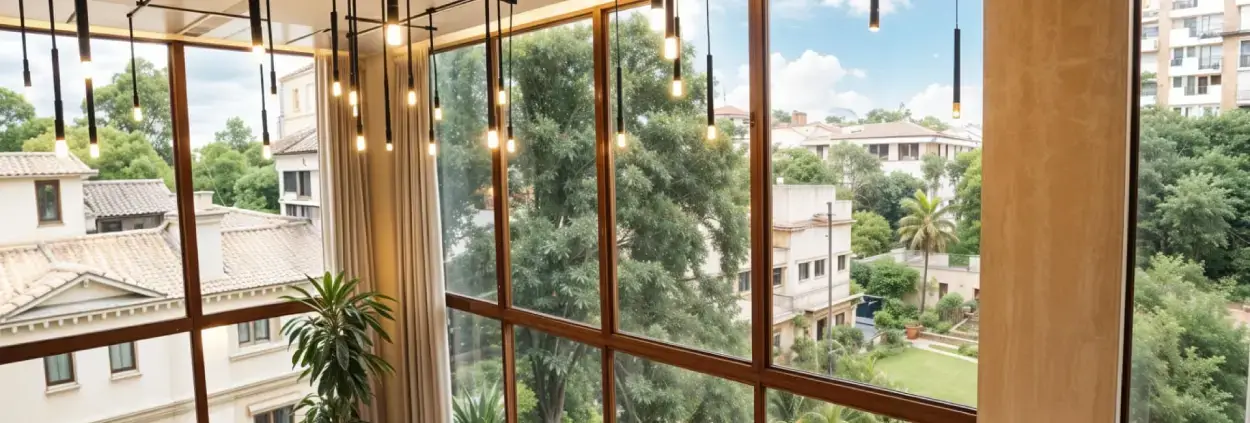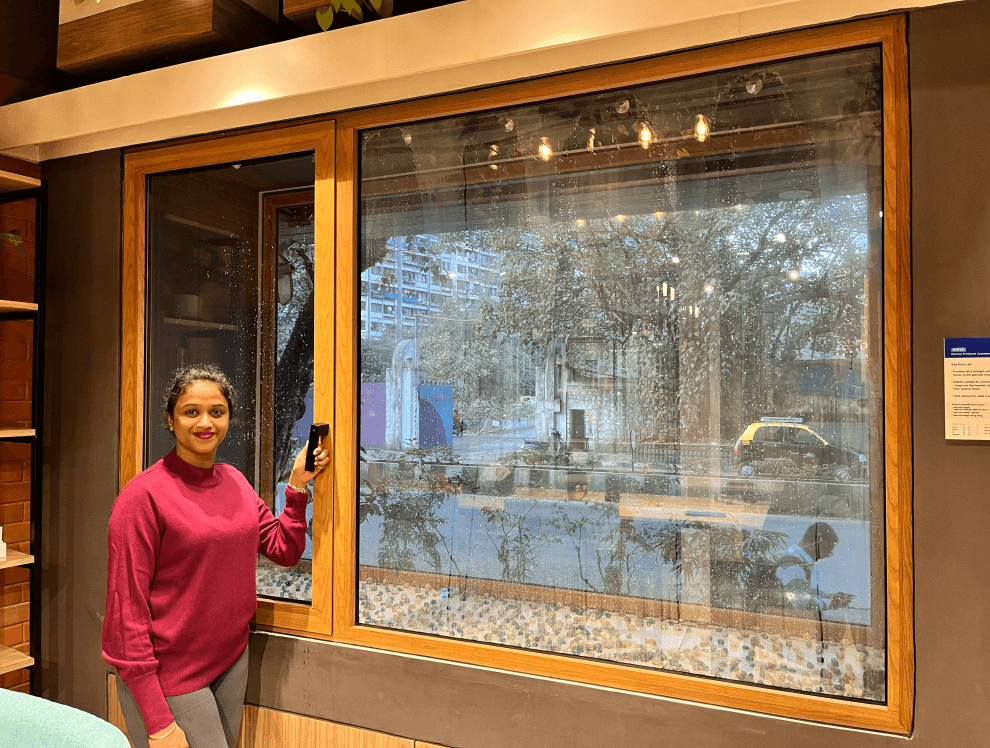
Want Bigger Views and Better Ventilation-Consider Large Aluminium Windows
Modern Indian homes are no longer confined to small, boxy designs. Open layouts, natural light, and seamless connectivity with the outdoors are now key features people look for when upgrading or building their dream homes. One of the best ways to achieve this sense of openness is by choosing large windows, especially ones made of aluminium. This practical and stylish choice blends durability with aesthetics.
Whether it’s a smaller apartment in Mumbai, a villa in Gurgaon, or a holiday home in Goa, large living room windows can transform any space. They bring in abundant natural light, offer panoramic views, and create better airflow, all while adding a sleek and contemporary touch.
But are large sliding windows and big aluminium frames just about looks, or do they offer real, everyday benefits? Let’s explore why they are quickly becoming the go-to choice for modern Indian homes.
Why Are Large Aluminium Windows Ideal for Indian Homes?
Indian cities face a range of challenges, including limited space, high energy costs, rising pollution, and the need for low-maintenance homes. Aluminium windows address many of these issues while enhancing the look and feel of a house.
- Slim Frames, Bigger Glass Areas
Aluminium is both strong and lightweight, allowing it to hold large glass panels without bulky frames. This allows homeowners to enjoy expansive, unobstructed views. - Durability in All Climates
From Delhi’s 45°C summers to Chennai’s coastal humidity, aluminium resists rust, warping, and corrosion.. - Low Maintenance
A quick wipe keeps the frames looking new, unlike wooden windows that need regular polishing or painting. - Customisation
Aluminium frames can be powder-coated in various colours, matching both modern and traditional interiors.
For Indian homeowners seeking both function and beauty, aluminium is a future-proof investment. Eternia, powered by Hindalco, takes this further with its patented Duranium™ alloy. It makes aluminium windows even stronger and more reliable, while still allowing slim and elegant designs.
How Do Large Living Room Windows Transform Your Space?
Your living room is often the heart of the home, the place where family gathers, guests are entertained, and evenings are spent relaxing. Adding large living room windows can change the entire atmosphere:
- Natural Light Advantage
Large glass panes allow the space to be filled with sunlight, reducing the need for artificial lighting during the day. This not only saves energy but also creates a warm, welcoming environment. - Illusion of Space
Floor-to-ceiling aluminium windows make even compact living rooms look bigger and more open. - Connection to Nature
Whether overlooking a garden, balcony, or city skyline, large windows bring the outside world into your living room. - Better Mood and Productivity
Exposure to natural light has been proven to improve mental well-being and focus. According to a Harvard Medical School study, exposure to natural light improves sleep cycles and overall mood by up to 50%.
Essentially, large windows act as living room showstoppers, being both functional and stunning.
Are Large Sliding Windows Practical for Everyday Use?
Yes. In fact, large sliding windows are one of the most practical window types for Indian households. They combine ease of use with maximum ventilation and space-saving benefits.
- Effortless Operation
Sliding windows glide smoothly on tracks, requiring minimal effort compared to heavy, hinged doors. - Space-Saving Design
Since they don’t swing open inward or outward, they are ideal for apartments with limited space. - Wide Openings
Unlike small casement windows, large sliding windows allow wide openings for fresh air circulation. - Great for Balconies and Patios
If your living room opens to a balcony or garden, sliding windows create a seamless connection between the indoors and outdoors.
In short, they strike the perfect balance between aesthetics and practicality, especially in city homes where every inch of space is precious.
How Do Aluminium Windows Improve Ventilation and Indoor Comfort?
Good ventilation is crucial in Indian homes, especially in cities where indoor air can feel stuffy. Aluminium windows, especially when designed in larger dimensions, help regulate airflow naturally.
- Cross Ventilation
When placed opposite or adjacent to other openings, large windows allow fresh air to flow freely.Large windows placed strategically can reduce indoor temperatures by 2–4°C (IGBC). - Custom Ventilation Control
Sliding or openable options let you decide how much air you want indoors, from a gentle breeze to full ventilation. - Humidity Management
In coastal regions, large windows help reduce indoor dampness by keeping the air circulating. - Healthier Indoor Air
Better airflow reduces dust accumulation, odours, and the risks of respiratory discomfort.
Thus, bigger windows are not just about views; they actively contribute to a healthier, more comfortable home.
Are Large Aluminium Windows Energy Efficient?
Yes, modern aluminium windows are not only stylish but also energy-efficient. With double or even triple glazing, they reduce heat transfer and help maintain a consistent indoor temperature.
- Cooler Summers
Large windows with proper glazing reflect heat, keeping your interiors cool. - Warmer Winters
In colder months, they retain indoor warmth, lowering heater use. - Lower Bills
Reduced dependence on air conditioning and heating directly translates into energy savings.
This efficiency adds long-term value, offsetting the initial investment in premium aluminium window systems.
Final Thoughts
Bigger, brighter, and smarter, that’s what modern homes are all about. If you’re considering a renovation or building a new home, large aluminium windows should be at the top of your list. They provide unmatched views, ventilation, durability, and style while fitting seamlessly into Indian living conditions.
Whether you prefer large living room windows for elegance or large sliding windows for practicality, aluminium frames offer the perfect blend of function and design. More than just an architectural choice, they’re an investment in comfort, health, and lifestyle.
So, if you’ve ever dreamed of a living room bathed in natural light with a view that takes your breath away, aluminium windows are the way forward.
With Eternia’s system aluminium windows, you also get the assurance of Hindalco’s expertise, patented Duranium™ alloy, and WiWA® certification — making them the trusted choice for Indian conditions.
Frequently Asked Questions
Yes, aluminium’s strength allows it to handle large glass panes safely. With proper locking systems and toughened glass, they are ideal even for high-rises.
Yes. In fact, they provide wider openings than casement windows and ensure better airflow.
Aluminium is stronger, longer-lasting, and requires less maintenance compared to wood or uPVC. It also allows slimmer frames for bigger glass areas.
No. With the right glazing, they actually reduce heat transfer, keeping interiors cooler in summer and warmer in winter — lowering electricity costs.


 +91 97699 40000
+91 97699 40000











